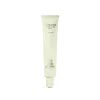What's inside
What's inside
 Key Ingredients
Key Ingredients

 Benefits
Benefits

 Concerns
Concerns

 Ingredients Side-by-side
Ingredients Side-by-side

Water
Skin ConditioningGluconolactone
Skin ConditioningLactic Acid
BufferingArginine
MaskingGlycolic Acid
BufferingPentylene Glycol
Skin ConditioningBifida Ferment Lysate
Skin ConditioningLactococcus Ferment Lysate
Skin ConditioningSalicylic Acid
MaskingSodium Hydroxide
BufferingInulin
Skin ConditioningHydroxypropyl Starch Phosphate
Lactobacillus Ferment Lysate
Skin ConditioningAlpha-Glucan Oligosaccharide
CleansingHydrolyzed Jojoba Esters
Skin ConditioningAcetic Acid
BufferingSclerotium Gum
Emulsion StabilisingChondrus Crispus
MaskingXanthan Gum
EmulsifyingPropanediol
SolventSodium Chloride
MaskingSodium Metabisulfite
AntioxidantCaprylyl Glycol
EmollientGlyceryl Caprylate
EmollientPotassium Sorbate
PreservativeSodium Benzoate
MaskingPhenoxyethanol
PreservativeWater, Gluconolactone, Lactic Acid, Arginine, Glycolic Acid, Pentylene Glycol, Bifida Ferment Lysate, Lactococcus Ferment Lysate, Salicylic Acid, Sodium Hydroxide, Inulin, Hydroxypropyl Starch Phosphate, Lactobacillus Ferment Lysate, Alpha-Glucan Oligosaccharide, Hydrolyzed Jojoba Esters, Acetic Acid, Sclerotium Gum, Chondrus Crispus, Xanthan Gum, Propanediol, Sodium Chloride, Sodium Metabisulfite, Caprylyl Glycol, Glyceryl Caprylate, Potassium Sorbate, Sodium Benzoate, Phenoxyethanol
 Reviews
Reviews

Ingredients Explained
These ingredients are found in both products.
Ingredients higher up in an ingredient list are typically present in a larger amount.
Pentylene glycol is typically used within a product to thicken it. It also adds a smooth, soft, and moisturizing feel to the product. It is naturally found in plants such as sugar beets.
The hydrophilic trait of Pentylene Glycol makes it a humectant. As a humectant, Pentylene Glycol helps draw moisture from the air to your skin. This can help keep your skin hydrated.
This property also makes Pentylene Glycol a great texture enhancer. It can also help thicken or stabilize a product.
Pentylene Glycol also acts as a mild preservative and helps to keep a product microbe-free.
Some people may experience mild eye and skin irritation from Pentylene Glycol. We always recommend speaking with a professional about using this ingredient in your routine.
Pentylene Glycol has a low molecular weight and is part of the 1,2-glycol family.
Learn more about Pentylene GlycolPhenoxyethanol is a preservative that has germicide, antimicrobial, and aromatic properties. Studies show that phenoxyethanol can prevent microbial growth. By itself, it has a scent that is similar to that of a rose.
It's often used in formulations along with Caprylyl Glycol to preserve the shelf life of products.
Water. It's the most common cosmetic ingredient of all. You'll usually see it at the top of ingredient lists, meaning that it makes up the largest part of the product.
So why is it so popular? Water most often acts as a solvent - this means that it helps dissolve other ingredients into the formulation.
You'll also recognize water as that liquid we all need to stay alive. If you see this, drink a glass of water. Stay hydrated!
Learn more about WaterXanthan gum is used as a stabilizer and thickener within cosmetic products. It helps give products a sticky, thick feeling - preventing them from being too runny.
On the technical side of things, xanthan gum is a polysaccharide - a combination consisting of multiple sugar molecules bonded together.
Xanthan gum is a pretty common and great ingredient. It is a natural, non-toxic, non-irritating ingredient that is also commonly used in food products.
Learn more about Xanthan Gum